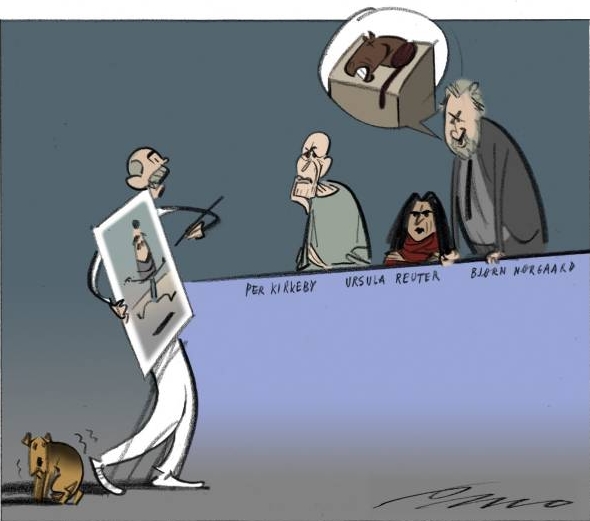Professor Wamberg publishes feature article on the posthuman in modern art in major danish newspaper
This week, on the 9th of January, Professor Jacob Wamberg published a feature article in Politiken, in which he sharply and briefly explains the posthuman condition, as envisioned by modern art and its critics in the twentieth century.

While art connoisseurs are long accustomed to the splintered and inorganic motifs of modern art, Wamberg explains, “it is as if the avant-garde artists' Babylon of imagery is still playing out on a ground of something profoundly un-understood, about which we have stopped asking questions.”
In 1948 Austrian art critic and former Nazi sympathizer Hans Sedlmayr (1896-1984) described modern art as the onslaught of a diseased state which he named Verlust der Mitte, the loss of the organically finite human figure as the natural center of humanism and humanistic art. Supposing that the roots of the posthuman condition in fact reach deeper than its current (bio)technological actualizations, Wamberg traces its emergence back to this loss of center, in which case the posthuman becomes a profound reshaping of “what it means to be sensing, thinking and interacting beings in the compacted and swarming world that has emerged since the industrial revolution.”
According to Sedlmayr, without its anchoring in an embellished human body, modern art is thrown into continuous imbalance: “between chaos and order, unconsciousness and exaggerated reason, smut and purism, demonic materialism and ethereal escapism”, and modern art thus releases all that transcends humanity: "the unconscious, the primitive, the animalistic and the inorganic."
But perhaps, Wamberg argues, this loss of human anchorage is not only “pathological hallucinations”, but may in fact be a sign of health, or indeed “the birth pangs for a new age”, capable of shedding light on the posthuman phenomenon. In that case, the phenomenon of the Verlust der Mitte is the artistic foundation with which the posthuman body - opened towards its former surroundings, partwise inorganic and technologically interacting beyond the humanistic comfort zone, becomes tangible for us.
The posthuman condition may indeed be more complex and profound than its technological surface. With the rise of capitalism and the entertainment society of the late twentieth and twenty-first century, the human life world may in fact have become more thoroughly dehumanized, than we like to think:
“When liberal capitalism in this way values mankind in purely economic terms, it produces an individual who, under her fit and healthy surface, is more profoundly and sadly dehumanized than that of the avant-garde: a replicant who simply wants to be entertained, when she is not producing. So ultimately the question is not if, but rather how we want to be posthuman.”
Read the published article on Politiken's website here
Or download the unabridged original attached below
Both are in Danish
